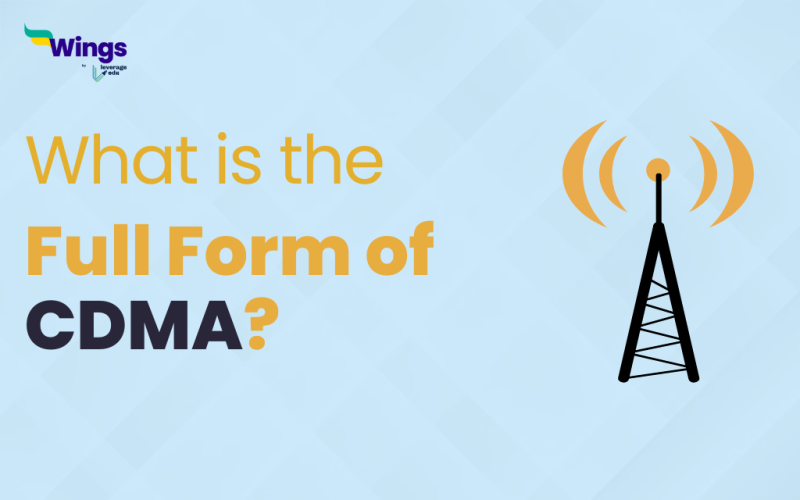The full form of CDMA is Code Division Multiple Access. It is a digital cellular technology that allows multiple users to share the same frequency spectrum simultaneously. Unlike other cellular technologies like GSM (Global System for Mobile Communications) and TDMA (Time Division Multiple Access), CDMA uses a spread spectrum technique to enable efficient and secure communication.
Spread Spectrum Technique
Table of Contents [show]
In the spread spectrum, we spread a signal over a wide frequency range. Furthermore, in CDMA, we assign each user a unique code that separates their communication signals from others. We use these codes to modulate the data and spread it over the entire bandwidth. This allows multiple users to share the same frequency band simultaneously without interfering with each other.
Also Read: Electronics and Communication Engineering
Advantages of CDMA
CDMA offers several advantages over other cellular technologies:
1. Increased Capacity: CDMA allows a larger number of users to access the network at the same time compared to GSM and TDMA. This results in higher network capacity and improved call quality.
2. Enhanced Security: The unique codes assigned to each user in CDMA make it difficult for unauthorized users to intercept or eavesdrop on calls. CDMA provides a higher level of security compared to other technologies.
3. Improved Call Quality: CDMA employs advanced error correction techniques, such as soft handoff and power control, which minimize dropped calls and enhance call quality, even in areas with weak signal strength.
4. Better Spectral Efficiency: CDMA efficiently utilizes the available frequency spectrum by allowing multiple users to transmit simultaneously. This results in improved spectral efficiency and better utilization of network resources.
Also Read: What is Telecommunication Engineering?
Applications of CDMA
CDMA technology is widely used in various applications, including:
1. Cellular Networks: CDMA is a primary technology used in many 2G, 3G and 4G cellular networks worldwide. It provides reliable voice and data services to millions of users.
2. Wireless Data Communication: CDMA is used for wireless data communication in technologies such as CDMA2000, EV-DO (Evolution-Data Optimized), and WCDMA (Wideband CDMA). These technologies enable high-speed internet access and multimedia services on mobile devices.
3. Satellite Communication: CDMA is also employed in satellite communication systems, where it allows multiple users to transmit and receive data simultaneously, optimizing the available bandwidth.
4. Military Applications: CDMA’s inherent security features make it suitable for military applications, including secure communications and encryption.
CDMA, or Code Division Multiple Access, is a digital cellular technology that enables multiple users to share the same frequency spectrum simultaneously. By using unique codes for each user, CDMA provides increased capacity, enhanced security, improved call quality, and better spectral efficiency.
This was all about CDMA full form. Visit our Full Form Page to discover more intriguing articles about full forms. You can also check out the consolidated 300+ full forms list!
 One app for all your study abroad needs
One app for all your study abroad needs















 45,000+ students trusted us with their dreams. Take the first step today!
45,000+ students trusted us with their dreams. Take the first step today!
